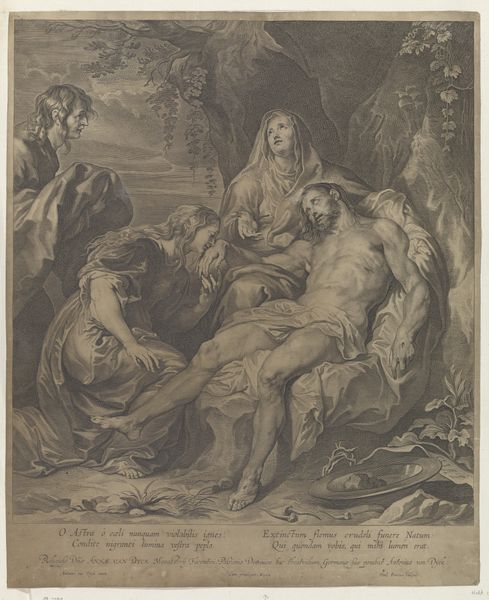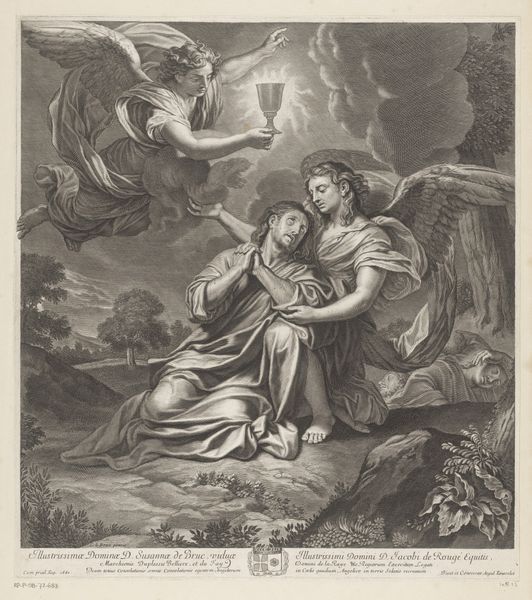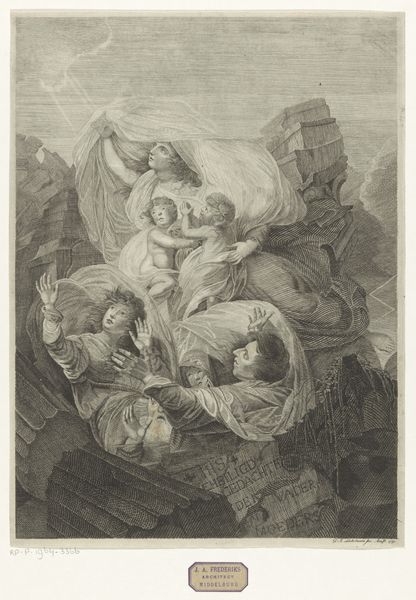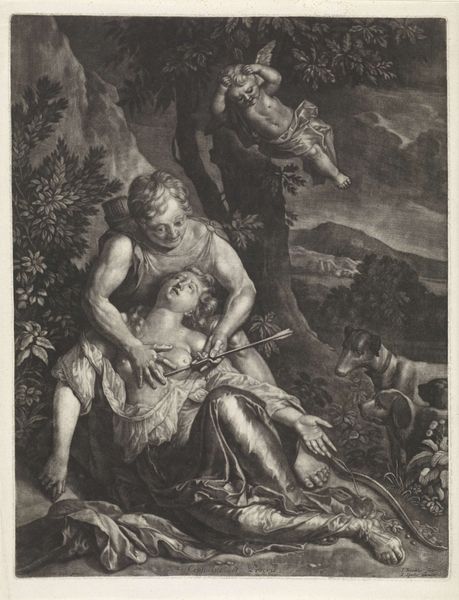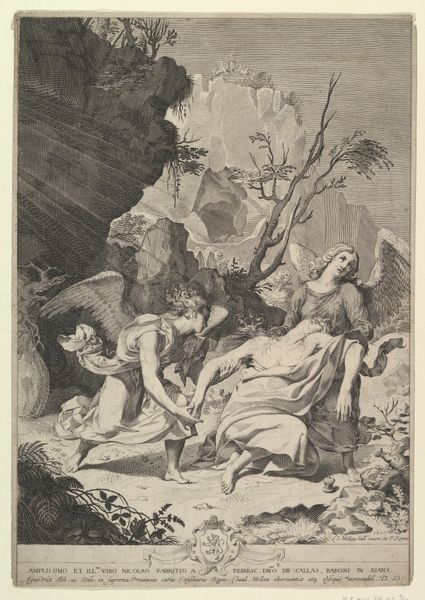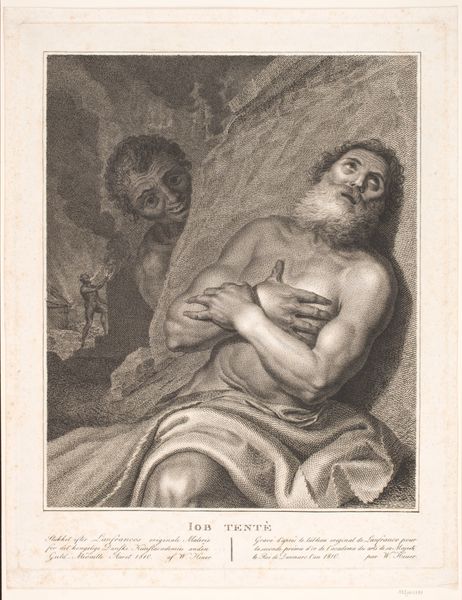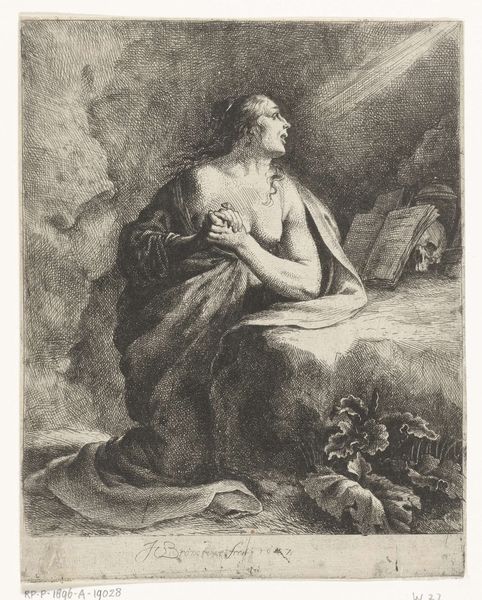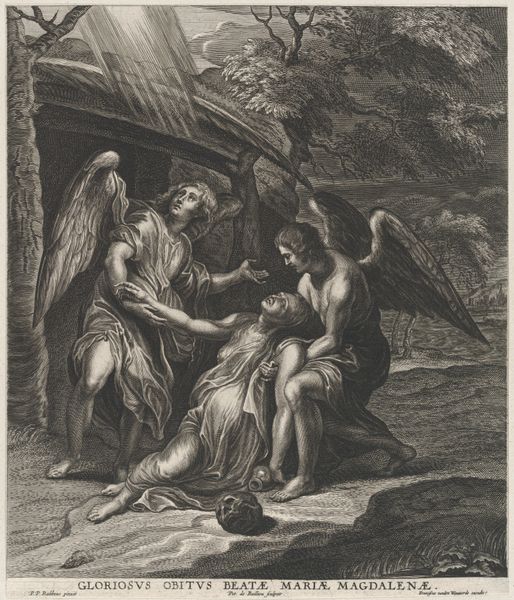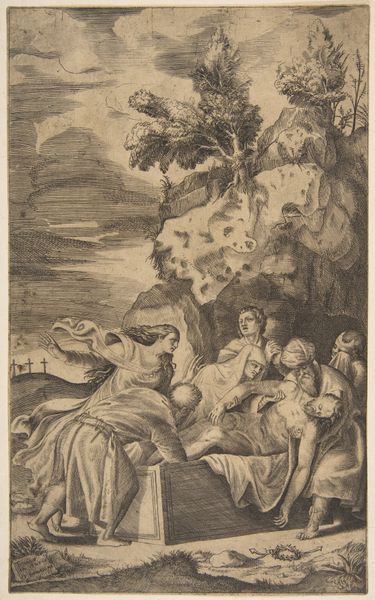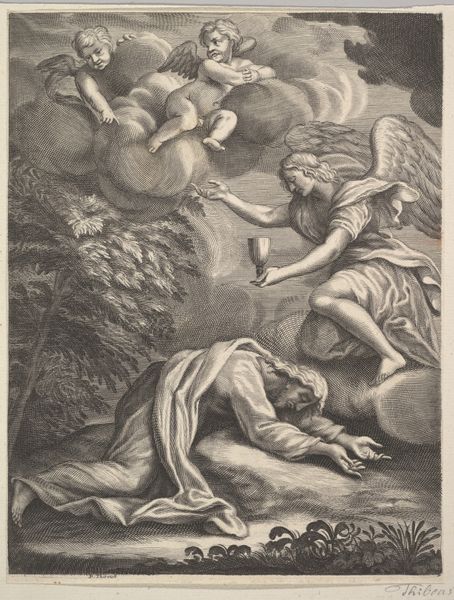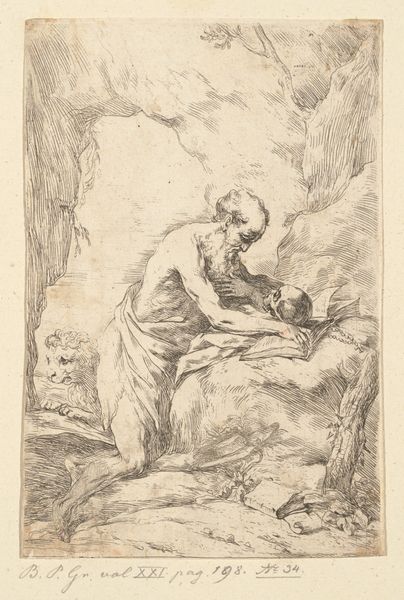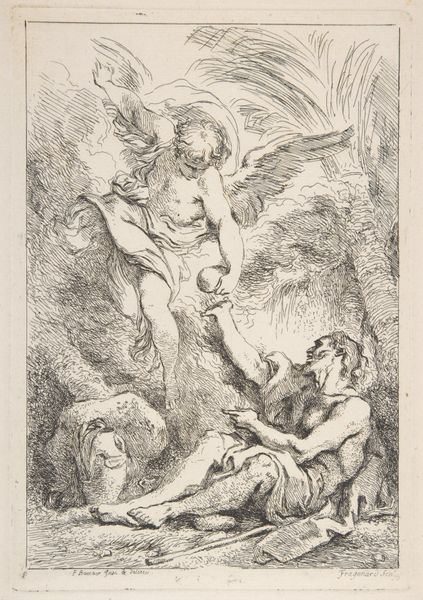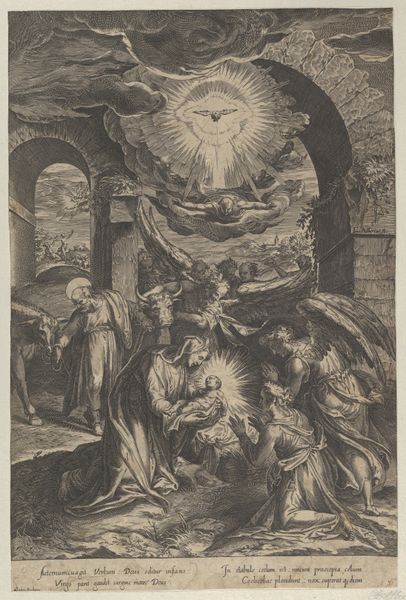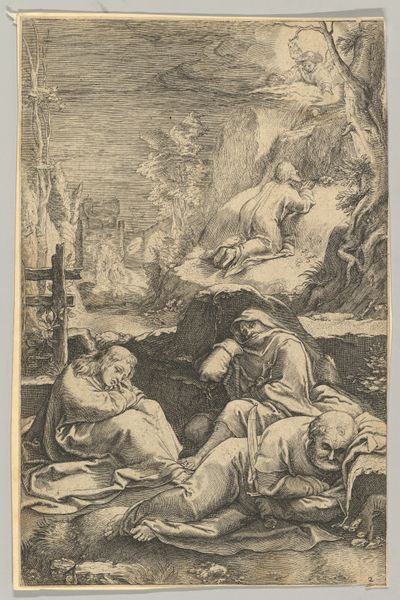
drawing, print, engraving
#
drawing
#
baroque
# print
#
figuration
#
line
#
history-painting
#
engraving
#
angel
#
christ
Dimensions: Sheet: 8 9/16 × 7 1/16 in. (21.8 × 18 cm)
Copyright: Public Domain
Curator: Here we have "Dead Christ Lamented by an Angel," an engraving by Jan Muller, dating back to somewhere between 1590 and 1600. Editor: Immediately, I'm struck by the tonal contrasts. The intense cross-hatching creates deep shadows that frame Christ's pallid body and the angel's luminous form. There’s a real theatricality at play. Curator: Precisely. Notice how Muller uses line to define the forms, particularly in Christ's musculature and the angel's drapery. The artist's use of chiaroscuro intensifies the emotional weight. The textures achieved, especially the folds of the cloth supporting Christ, highlight the expressive capacity of engraving. Editor: This print echoes wider anxieties about death and salvation. The very pose of Christ – limp, yet somehow elevated – alludes to the theatrics surrounding sacrifice so prevalent at the time. A theatrical way of emphasizing themes of grief, redemption, and perhaps even divine intervention, all playing out on the public stage of religious art. Curator: Indeed. Muller also emphasizes the narrative through the use of iconographic symbols. The hanging lamp, shedding light on the scene, represents divine illumination in the face of earthly sorrow. It reinforces the sense of a sacred, transformative moment. The lines lead the eye, drawing the viewer to interpret, through contemplation, what is being displayed here. Editor: The placement within the Metropolitan Museum contextualizes its role. Once intended for circulation as a devotional object, now it invites viewers to engage with questions of faith and artistic skill. Consider who was seeing it, why, and the spaces—homes, chapels, private collections—where these images operated. The scale of the engraving lends itself to portability, and an intimate viewing experience. Curator: Looking at the composition closely, one notices that the lines of the landscape draw the eye inexorably back toward the figure of Christ. He's not merely a subject; he is the focal point upon which all the formal decisions seem to hinge. Editor: And it compels us to confront, still, the spectacle of mortality, rendered in this precise historical and aesthetic framework. Curator: Yes, an image intended to spark contemplation but ultimately serving a public function of propagating a very precise version of grief. Editor: A rather evocative piece.
Comments
No comments
Be the first to comment and join the conversation on the ultimate creative platform.
